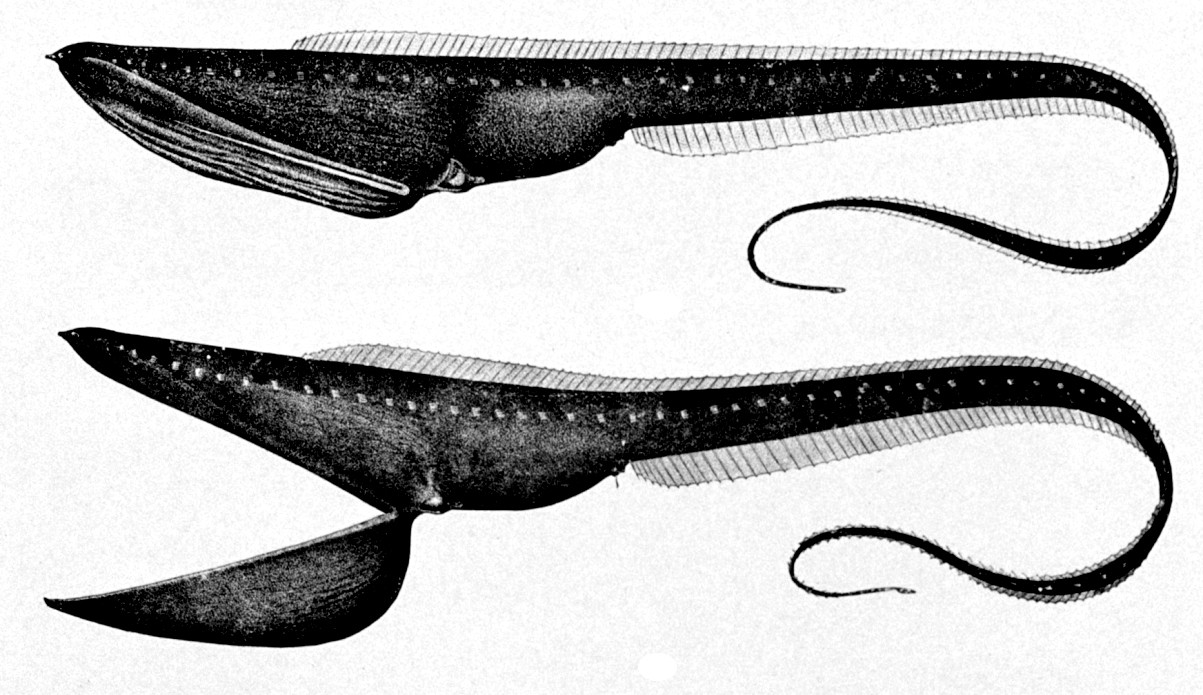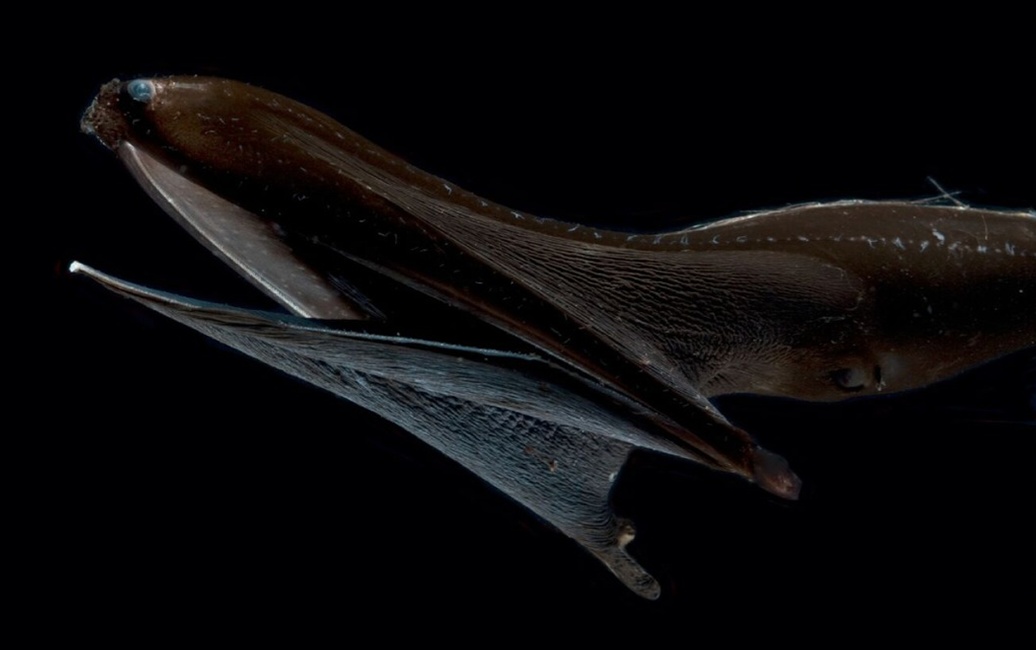Continually adapting in the depths of the ocean, ultra-black eels have captivated researchers as they seem to be evolving in order to employ a tactic of camouflage. With their luminous tails, the eels are able to draw their prey in closer before devouring them with their intimidating jaws.

Analysis of Anguilloidei species (including freshwater eels, spaghetti eels and transparent onejaw eels) has revealed that dark pigmentation has developed independently on more than one occasion. Examples of this include the ancestors of pelican eels (Eurypharynx pelecanoides), swallower eels, bobtail eels, snipe eels, and sawtooth eels.
The findings of a recent study have been published on in the journal Environmental Biology of Fishes on July 11, 2020, providing a better understanding of the behavior of deep-sea creatures, many of which are still not extensively studied.
Despite the fact that the deep ocean is the largest organismal environment on the planet, we still understand very little about it, according to Mike Ghedotti, a professor of marine biology and ichthyology at Regis University in Denver. He also noted that surveying the deep sea is an expensive process and that it does not happen as often as surveying the shallow ocean.
The bathypelagic, or deep-sea, eel, usually resides and hunts in the depths of the ocean’s “Midnight Zone,” between 3,300-13,100 feet (1,000-4,000 meters) where no sunlight can penetrate. This perpetual darkness has distorted the eels’ bodies in bizarre ways, with the pelican eel’s mouth a prime example of stretching capacity unmatched by any other species. Investigating the activities of these creatures in such depths has proven to be incredibly difficult.

In an attempt to elucidate the mysterious behavior of deep-sea eels, the researchers took a closer look at the skin tissue of a pelican eel under the microscope. On scrutiny, the scientists noticed a peculiar jet-black pigmentation that was spread across the creatures’ bodies bodies.
Investigations into other types of eel showed that bathypelagic species such as swallower eels and bobtail snipe eels had the same ultra-dark coloration as pelicans eels, whereas deepwater pelagic eels, like snipe eels and sawtooth eels, that inhabit shallower waters had a slightly reduced degree of this pigment.
Recently, for the first time, a pelican eel was captured on camera with food in its stomach. Despite its lack of swimming prowess, it is presumed that these creatures use their bioluminescent tails as a fishing lure to attract small crustaceans or squid, that they then consume.
The dark pigmentation of these predators enables them to use bioluminescence to their advantage, making the tail tips of pelican eels and swallower eels look like glowing, captivating beacons in the dark. When a pelican eel has lured its prey close enough, its mouth can expand fivefold and it devours its target in a single gulp.
Ghedotti stated that it is essential while luring prey with light that the animal does not detect the presence of the predator beyond the lure. Additionally, there are a variety of ways in which bioluminescence is utilized amongst different fish species apart from using it to lure prey, and in most of those cases, it is more advantageous if your own luminescence does not indicate the existence of the other parts of your body.
The study was originally published in the journal Environmental Biology of Fishes on July 18, 2023.




